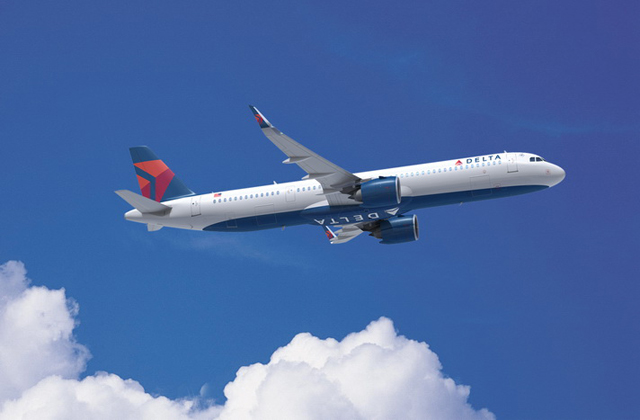Delta Air Lines is tightening its focus on cost control in 2018, after seeing unit costs rise as much as 5% this year.
"That's a disappointing number," said Ed Bastian, chief executive of the Atlanta-based carrier, referring to Delta's fourth quarter unit costs (CASM) forecast during an investor day presentation on 14 December.
CASM excluding fuel and special items is expected to rise by 5-5.5% in the fourth quarter, up to one percentage point higher than the airline's last forecast in October.
Labour, fleet and product investments drove the 4.5-5% annual increase in CASM excluding fuel and special items at Delta in 2017. A new pilot contract that was ratified in December 2016 and raises given to other employees in April are driving a 1.5 percentage-point increase in unit costs, a presentation by chief financial officer Paul Jacobson shows.
Fleet investment, including the decision to retire its Boeing MD-88 fleet by 2020 and associated asset depreciation, drove another roughly 1.5 points of CASM growth and the airline's ongoing product investments by roughly one point.
"In 2017, our unit cost growth was invested in all the right things," says Jacobson, finding a silver lining in the increases.
In 2018, Delta will lap the wage increases in April as well as the MD-88 retirement decision in the spring, allowing unit cost growth to "normalise" for the year, says Jacobson.
Not everyone is convinced yet.
"The magnitude of 2017's [unit costs] outcome casts a pall over one's confidence on costs going forward," wrote JP Morgan analysts in a report on 14 December.
The outcome JP Morgan refers to is the upward creep in CASM excluding fuel and special items guidance at Delta through 2017. The carrier initially guided a 2-3% annual increase in December 2016 that rose over the course of the year to the current 5-5.5% forecast.
NEO BET
Fleet is a big part – as it has been for more than five years – of Delta's strategy to become more efficient and less costly over the long term.
The airline announced a commitment for 200 Airbus A321neos, including 100 firm orders plus 100 options, ahead of its investor day on 14 December. The aircraft, which will begin arriving in 2020, will replace smaller, aging models in its mainline fleet, namely Airbus A320s and Boeing MD-90s.

Delta
The A321neo will have 197 seats, compared with 160 seats in the A320 and 158 seats for the MD-90.
Delta expects at least two major cost benefits from the order: firstly, roughly 20% better fuel efficiency versus current generation aircraft – and nearly 40% compared with its Boeing MD-88s – and secondly, lower maintenance costs. In addition, the increased seat count and added ancillary and upgrade sales opportunities are forecast to boost revenues.
The carrier expects roughly $300 million in operating expense savings (including roughly $200 million from fuel efficiency gains) from fleet renewal in 2018, Jacobson's presentation shows. This includes replacing Boeing 747-400s and MD-88s with A321s, Airbus A350s and Boeing 737-900ERs.
"The combination of the upswing in gauge and better fuel efficiency help with Delta's longer-term cost story," says JP Morgan.
Delta is scheduled to take delivery of 75 aircraft, including 37 A321s, five A350-900s, 17 737-900ERs and 16 CS100s in 2018, Flight Fleets Analyzer shows.
However, Jacobson's presentation indicates roughly 60 aircraft deliveries next year, suggesting that Delta's updated guidance includes expected delays to the CSeries aircraft due in 2018.
Executives did not comment on the CSeries, the Boeing complaint with the US Trade Commission or Airbus's planned investment in the programme.
The A321neos are just the latest phase of Delta's ongoing fleet renewal and upgauging programme, with earlier phases including the 737-900ERs order in 2011, Boeing 717-200 lease in 2012 and A321 order in 2013.
REVENUE BOON
Delta forecasts a 4-6% increase in top line revenues in 2018, says Bastian. This will come from forecast demand strength, the carrier's ongoing segmentation initiative and its global partner strategy, with new joint ventures with both Korean Air and WestJet expected to start up during the next two years.
Forward bookings in 2018 are "very strong", said Delta president Glen Hauenstein at the event. He expects the airline to report passenger unit revenue (PRASM) growth in each quarter next year.
PRASM growth at the airline only turned positive in the second quarter after falling for six sequential quarters.
Segmentation is expected to drive another roughly $400 million in incremental revenue in 2018, Hauenstein's presentation shows. This will bring the total benefit programme to roughly $2.2 billion annually since it began in 2014.
The airline debuted its new international business-class product, Delta One suites, and premium economy cabin, Premium Select, in October with the entry into service of its A350. The latter is a new class for the carrier that, to date, is averaging roughly 1.7 times the yield per seat compared with standard economy, says Hauenstein.
However, Delta does not expect the majority of transpacific flights to have premium economy until 2021.
Joint ventures and alliances will be a big source of revenue growth for Delta. The airline forecasts roughly $600 million in additional revenue from them by 2020 compared with 2016, including an around $275 million jump from 2018 to 2019 with the new Korean Air and WestJet pacts, as well as an updated agreement with Air France, Alitalia, KLM and Virgin Atlantic Airways.
Delta and Korean Air hope to implement their transpacific joint venture in late 2018, after the deal receives approval from Korean authorities. The US Department of Transportation signed off on it in November.
The pact with WestJet is further out, with executives hoping to finalise the agreement in the first half of 2018 with regulatory approval taking around a year after that, or until some time in 2019.
Source: Cirium Dashboard


























